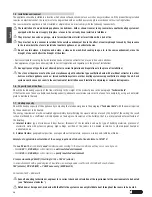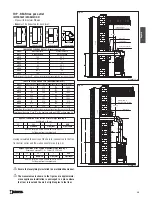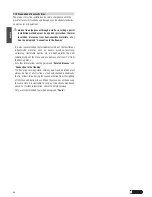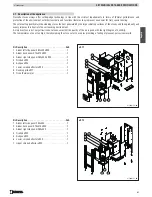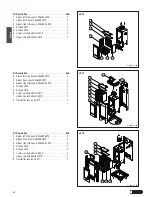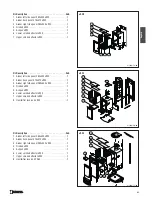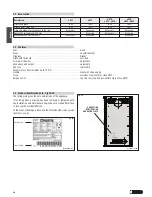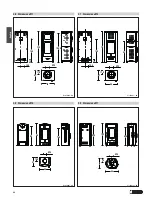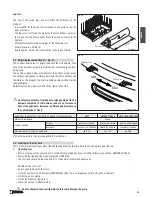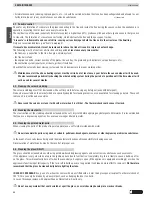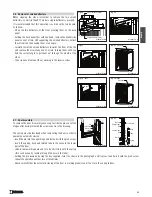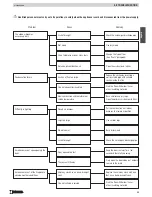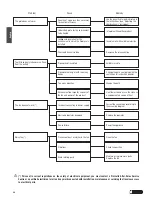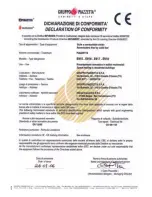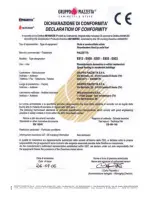
50
English
2. Start-up
- During this first time of operation it is recommended to use the appliance at minimum capacity, stoking the grate for at least the first
day with only 50% of the logs usually indicated as normal.
- Keep the air dampers in the operating position (except for lighting), see paragraph
“Combustion air regulation”
.
- This stage allows all the parts to settle down and fumes caused by paints/varnishes, greases or oily liquids used in manufacture to
disappear.
- Air the room well in this initial stage.
- This procedure must be carried out with the forced ventilation system turned off.
After this, the appliance will no longer emit odours due to paint evaporation and must only be stoked up with the indicated nominal amounts.
3.4 Lighting - Fig. 32 - 33
Before lighting, remove the supplied accessories (see accessories paragraph) and flammable elements from the grate or from
the ash tray. If provided in the kit, it is very important to remove the paint spray can, which could explode.
When lighting the fire, the grate should be brought quickly to working temperature. If it is done slowly, condensation will inevitably form
and cause blackening of the grate and the glass.
Put the fuel into the grate according to the methods described below:
1. Put the dampers to the open position (MAXIMUM) (see
paragraph
“Combustion air regulation”
).
2. Place the material for kindling (paper, firelighter, etc.) in the
centre of the grate and add small pieces of soft wood (fir) in the
form of a pyramid. To light the soft wood quickly, open the door
by approx. two centimetres for 5–10 minutes. Figure 32
3. Once a bed of embers has formed proceed to fill with fuel fig. 33
and to adjust the dampers, referring to the table in the paragraph
“Combustion air adjustment”
. Do not open the firebox during
operation.
3.5 Opening the door
The door must remain closed while the stove is alight, otherwise it could damage the inside of the stove.The door must be opened slowly,
holding it slightly ajar for a moment before opening it completely. Open the door when the flame has died down and certainly never when
the flame is very intense.
Always use the glove provided.
Ensure that the self-closing door does not bang shut, as this could break the glass.
The glove is not designed for picking up burning embers!!!
It is not dangerous if smoke comes out while the stove is stoked; just open the window for a while.
3.6 Night time operation at minimum
After normal operation during the day, the appliance may continue to operate for a few hours at night.
When stoking up the fire for the last time in the evening, ensure that the bed of embers is sufficient, put the wood in the grate and then
set the combustion air dampers to minimum. Night time operation of the stove at minimum depends on the type of wood (a very hard
wood is recommended), the flue draught and the weather.
The amount of wood to put on and the necessary adjustment of combustion air flow will be learned with experience
(see the paragraph
“
Combustion air dampers
”).
The next morning, start up the fire at maximum to burn off any creosote formed during the night. Creosote deposits start to form when
the flue temperature falls to below 150 °C. To prevent this from happening it is important to try to maintain the grate of the appliance at
normal working temperature (rated heating efficiency phase) as long as possible.
Prolonged operation of the stove at minimum could require more frequent cleaning of the grate and the flue.
DT2030065-00
Fig. 33
DT2030064-00
Fig. 32

